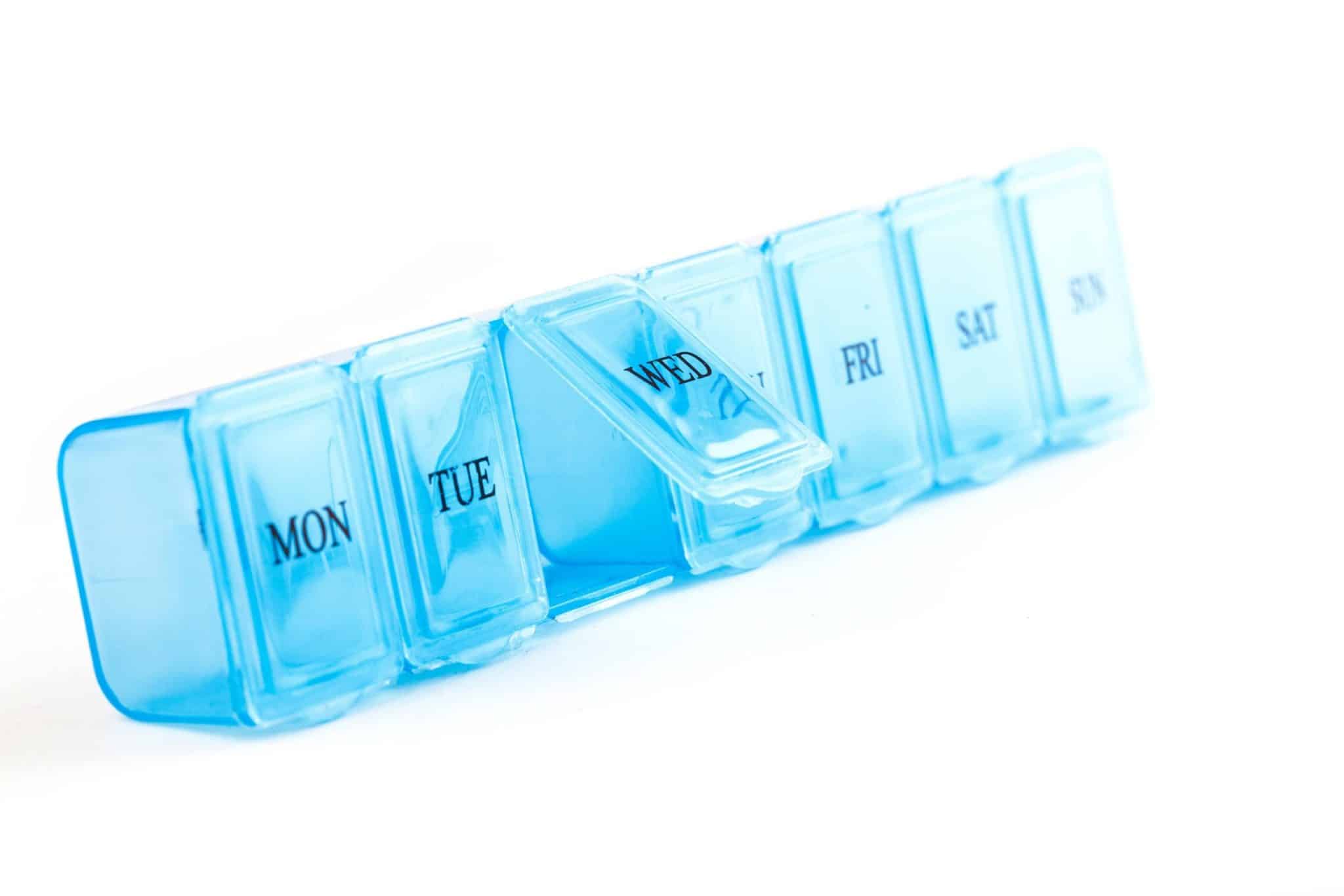Living hinges are a web of plastic with a deliberate fault line that replicates a more complex hinge without the additional parts. Think ketchup bottle or clamshell packaging.
However, designing and manufacturing an effective living hinge is more complicated than you might realize. You need a relatively tiny piece of plastic to survive repeated flex stress over the course of the life of the product while being integral to its operation.
If you’d like to know more about how to design an effective living hinge and what applications one has, read on!
What Is a Living Hinge?
At its most basic level, a living hinge is a small web of plastic between the cap of a product and where the cap attaches to the rest of the product.
The thin web of flexible plastic allows the two parts to flex across ranges of greater than 180 degrees. It also creates a flexible hinge that can resist being cycled for the predicted lifetime of the product.
The living hinge enables manufacturers to create the cap as a single piece, normally by using plastic injection molding. Rather than a more complicated to manufacture multi-part hinge.
Living hinges are most commonly found in electronics packaging, cosmetics and consumables. The example of the sauce bottle being the one most people will be familiar with.
Types of Living Hinge
There are several types of living hinge design that offer different benefits, including:
The Flat Hinge
The most basic and common type of living hinge is the flat hinge. It is made up of a landing on each side of the hinge. The thin hinge section with a deliberate fault to control where it hinges.
The flat hinge is often seen on electronics packaging or plastic injection molded packaging. It is used for items like power tools and their accessories.
The Double Hinge
The double hinge is composed of two hinges with a narrow section of landing material between them.
The aim of the double hinge is to allow the hinge to move further than 180 degrees or to allow for packaging with a void between the two hinged parts.
Boxes for DVDs are one of the more common uses for the double hinge.
The Butterfly Hinge
Butterfly hinges are most commonly used on dispensing caps to allow them to stay open. When it is cycled past a certain angle, it will flip open or closed. This makes it ideal for the cap of any dispensing bottle.
The butterfly hinge is most commonly found on sauce bottles and cosmetics bottles, like shampoo.
The Bi-stable Hinge
An evolution of the butterfly hinge is the bi-stable hinge. It has an additional hinge or hinges mounted either behind or on either side of the thin plastic web that forms the main hinges.
These ancillary hinges are normally smaller and thicker than the main hinge. These act as springs to hold the hinge in either the open or closed position. The addition of these added hinges makes the cap stable in both the open and closed positions, hence the name.
Bi-stable hinges can be used in similar applications to butterfly hinges. But these are commonly used where it is important that the cap is stable in the open position.
One example of this would be for dispensing corrosive or hazardous cleaning liquids. These are very effective to prevent the cap from snapping shut accidentally.
Materials
The most common material used in the construction of a living hinge is polypropylene. In 1957 engineers at ExxonMobil discovered that when they are below a certain thickness, polypropylene molecules oriented in the direction of flow.
When the polypropylene living hinge was bent perpendicular to this orientation, the part was strong enough to create a hinge. This hinge would not break despite repeated cycling, making it the best living hinge plastic.
The name ‘living hinge’ was coined by ExxonMobil employee Bob Munns. It was widely adopted when the living hinge design was revealed at the 1963 National Plastics Exposition (NPE). Back then, it was used as the hinge on a recipe box.
Polypropylene remains the most commonly used material for living hinges. These can be molded from almost any polypropylene resin, including homopolymers, impact copolymers, standard copolymers, and nonordered monomers.
Where polypropylene isn’t available, polyethylene can be used as a suitable replacement.
Urethane resins can also be used as a commonly available material with similar properties to polypropylene. These can be used to bridge the gap between a design and production when prototyping.
BCCplastics BC8160 resin and the Hapflex 600 series are urethane resins specifically designed for use in living hinge applications.
Common additives used in both polypropylene and polyethylene living hinges include glass, talc, and fiber. These increase the tensile strength or visual additives like Perl flakes for a reflective or metallic appearance.
Processes
The best process for creating a living hinge depends on the required use. For end-product living hinges, injection molding remains the best method for the reasons we’ll discuss below.
If you’re just looking to prototype a product with a living hinge, there are more options, such as CNC machining and 3D printing.
The Jiga Marketplace is an excellent opportunity to connect with some of the best additive and subtractive manufacturers around the world and get real-time expert feedback on your living hinge designs.
Injection Molding a Living Hinge
Injection molding tends to be the most common and most cost-effective way to produce living hinges. This process is used for end products and large-scale prototyping for sales demonstrations.
Using injection molding for production runs where the part is expected to be cycled repeatedly. It takes advantage of the fact that polypropylene demonstrates unique flexibility and strength when oriented perpendicular to the center axis point of the hinge.
When using injection molding to create a living hinge, there are a few important factors that need to be taken into consideration:
- In order to take advantage of the unique orientation of polypropylene at low thickness, the injection mold must be designed to force the polymer to flow across, but not along, the hinge.
- High melt temperatures and velocities are needed to ensure a uniform flow. If the melt temperature is two low or the flow is not uniform, the hinge may fail.
- When the flow front of the polymer crosses the hinge, there will be a resultant pressure drop. The design of the mold should take this into account as it increases the polymer’s shrink rate. Also, it may cause the two halves of the product to mate improperly.
- Gates should be placed to ensure that weld lines do not interfere with the action of the living hinge.
- Ideally, the hinge should be flexed as soon as it is removed from the mod. This is to ensure the optimum molecular orientation and boost both strength and durability.
Most injection molded living hinges are molded-in. However, they can also be die-formed for parts that are larger or more complex.
In this case, a heated die is used to compress the hinge into a flat surface between two parts.
Where the hinge is die-formed, the most important factors to take into consideration are:
- The compression used to force the die into the polypropylene cannot exceed the ultimate stress tolerance of the polypropylene or the hinge will break.
- The heated die needs to be heated to between 250 and 290°F in order to get the optimum plastic deformation of the polypropylene.
CNC Machining a Living Hinge
CNC machining a living hinge is possible due to recent advancements in technology. Now, there are techniques that allow for polypropylene to be machined down as thin as 0.005 of an inch.
The benefit of using subtractive manufacturing is that it is cheaper and faster than injection molding.
You don’t need to design a specific mold. Plus, there is generally no lower limit on order numbers as there are with larger injection molding manufacturers.
The downside is that, because it does not take advantage of the particular molecular orientation seen in injection-molded polypropylene, the hinge is not as durable.
CNC machining is ideal for making a rapid prototype, but not for end products or sales demonstration models.
3D Printing a Living Hinge
3D printing a living hinge has many of the same benefits as CNC machining a living hinge. And, a lot of the same drawbacks. It is quick and can be done in small batches.
Changes to the design of a living hinge are easy to implement. Also, iterations can be rapidly printed to reflect those changes in design.
However, as with CNC machining, the hinges produced do not have the strength or durability of an injection molded polypropylene hinge.
How to Design a Living Hinge?
Depending on whether you are designing your hinge to be produced by injection molding or by additive manufacturing, there are different factors to take into account.
A Hinge Designed for Injection Molding
There are several factors to consider when designing a living hinge for injection molding, including:
Gate Placement
Uniform wall thickness is normally vital to injection molded products.
If the walls are of an uneven thickness, the difference in the rates of contraction when the part is cooling will cause warping or even breakage.
However, with a living hinge design, the opposite is true, as the hinge needs to be a different thickness to the rest of the part.
The reduced thickness of the plastic and the flow direction during molding is what causes the molecular alignment that is so important to hinge durability.
This means that proper gate placement is vital to getting the correct flow of polypropylene during the molding process.
Rounded Corners
Rounding sharp corners is a good idea on most injection molded products.
It’s even more important when designing a living hinge for injection molding as the increased stress on the sharp corners will reduce the durability of the hinge.
Web Thickness
The thickness of the polypropylene web used to create the living hinge should be between 0.007 and 0.015 of an inch. Thinner webs may not fill properly when molded and thicker webs will not have the required flexibility.
A Hinge Designed for 3D Printing
When it comes to designing a living hinge for 3D printing, orientation is key.
Because both FDM and SLA printing are done in layers, the build plane of the printer should be oriented perpendicular to the hinge direction for maximum hinge durability.
Ideally, the resolution of the hinge should be at least twice that of the rest of the print for additional strength.
Applications in Different Industries
Although most commonly found in the electronics and cosmetic industries, the living hinge has significant utility in any industry.
The primary benefits of the living hinge include:
- A simple, easy-to-design, and low-cost hinge with multiple manufacturing options for both prototyping and manufacturing.
- Takes advantage of the unique properties of a low-cost material, in this case, polypropylene, to produce a plastic hinge that has the durability to resist huge amounts of cycling.
- A proven history of functionality across a range of industries dating back to its discovery and invention in 1957.
- Injection molding is both inexpensive in high volume production runs and extremely widely available. This makes it ideal for mass-producing the end product and it also produces the most durable hinge.
- CNC machining and 3D printing can be used to rapidly prototype and iterate on living hinge designs in small numbers with rapid turnaround.

Shaked S

